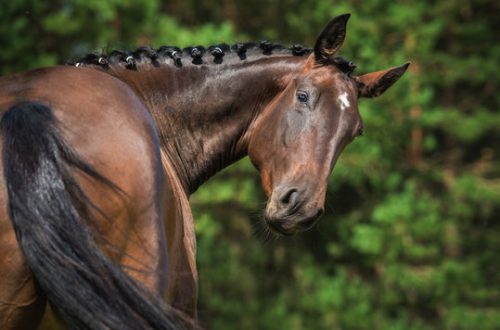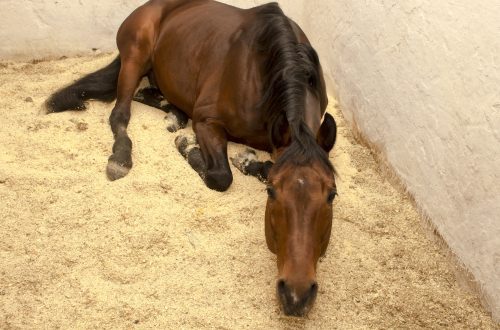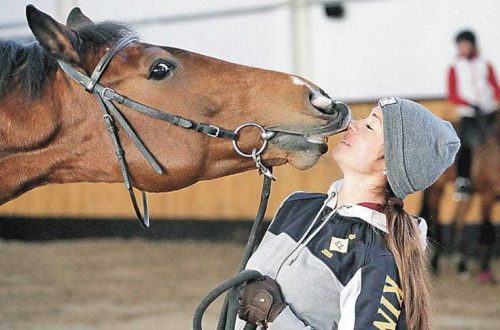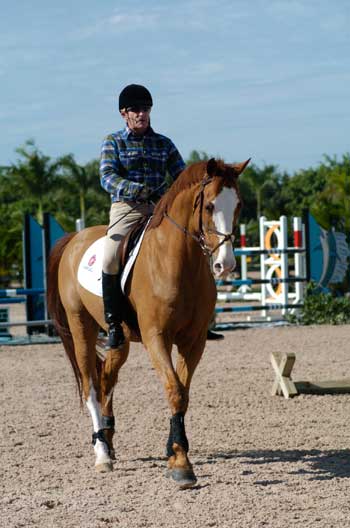
15 tips for riders from George Morris
15 tips for riders from George Morris
This article appeared as a result of the visit by the author of a five-day master class held by George Morris for riders aged 15 to 21, selected based on the results of the 2013 show jumping and eventing competition season.
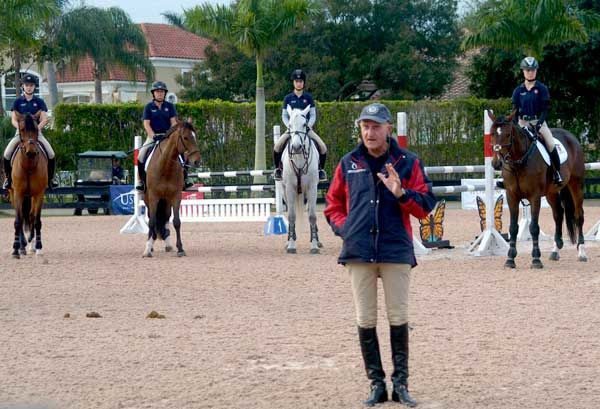
Multiple Olympic medalist, former US show jumping coach, George has addressed many issues, but in this article we want to focus on 15 principles of the rider, which, in his opinion, A must for riding enthusiasts of all levels and ages.
1. Creating momentum.
George started every lesson with a step. Riders were required to use their legs to actively move the horse forward and eventually create pulse. “Everything starts from the back,” he said. The rider overcomes the resistance of the horse, stimulating it to move actively from the hindquarters, to substitute the hind limbs deeper under the body. As a result, the withers are lifted up, the horse’s head is lowered, the neck and back are rounded.
George required riders to keep their hands above the horse’s withers and maintain a straight line from the elbow to the horse’s mouth: “Use your leg to encourage the horse to reach for the snaffle. Seek contact. You should feel like you are pushing the horse’s head down, not pulling it down.” “It is very important to take and give in time,” he added. “When the horse yields to me, I soften my hand.” He reminded the riders of this every day during the entire master class, during their work at the walk, trot and canter.
2. Alignment
George constantly reminded riders to use the inside leg of the girth to push the horse onto the outside rein. This develops and maintains straightness and is necessary to create a connection between the horse’s forehand and hindquarters. At the canter, using the inside leg on the outside rein, bend the horse so that you can only see the outer corner of the horse’s eye.
“There are two types of straightness,” he explained. – First, along the line of the bottom of the horse. Does her back left hoof follow the footprint of her front left hoof, and her back right foot follow the footprint of her front right? By nature, many horses walk slightly hip-in. The second type of straightness is straightness along the topline, from the tail to the back of the head. When moving in a straight line, the horse must maintain a straight body.
When moving in a circle, her body should bend in accordance with the arc of a circle. George also reminded the riders of proper seating – the only way to feel if the horse is moving correctly.
3. The position of the hands.
On the fourth day of the event, George mounted a horse that resisted contact and walked with its head held high. In order to round the horse, George used the “old French system” with his hands. “First I show the horse that he cannot raise his head above the level of my hand. I hold my hand high and forcefully drive the horse with my inside leg to the outside rein. As soon as she softens in her mouth and lowers her head, I soften and lower my hand. I do not need auxiliary reins and strict iron. You won’t see me sawing the horse’s mouth,” he explained.
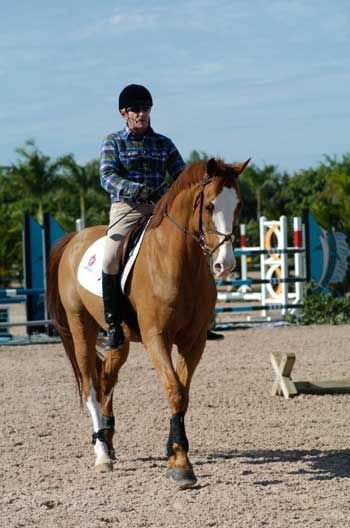
George taught this method to other riders. If the horse is high lifted its head and resisted the contact, he asked them to raise the hand and give a strong push with the opposite leg: “Sooner or later the horse will start to accept the contact. As soon as she softens in her mouth, it is necessary to encourage her by softening and lowering her hand. Many riders drop the wrist when they feel resistance, but that only teaches the horse how to disobey!”
4. Transitions.
When working on the transitions, George wanted to see the horses going “uphill” during the transition and moving ahead of the legs. When performing stop-step-stop transitions, he asked riders to include four parts of the body: back, seat, legs and arms, asked them to “stretch in the spine” to create force, not to throw the horse with legs and close the hands.
George also worked with students on the transitions within the gaits. At the canter, they lengthened the stride and shortened it every 10 paces. To lengthen the canter stride, George suggested softening the hands, as the horses were already moving with momentum. When cutting, he asked to show the maximum possible short canter. “If the horse is struggling, cover your hands. You must not give up and give in,” he said.
5. Creating rhythm with cavaletti.
During the arena work, the riders trotted along the cavaletti, which contributed to the creation of a regular rhythm. In one of the exercises, riders entered the cavaletti in a steep arc. They drove in a cavaletti from the right, made a sharp turn to the left, passed the second cavaletti and drove off to the right. Bending alternately to the right and left helps to improve the horse’s compliance and contact.
In another variant, the riders trotted in a zigzag pattern along three cavalettis set across the entire width of the arena. The emphasis again was on maintaining a constant rhythm. Such work in the future makes it easier for the horse to overcome small obstacles.
6. Work on compliance with side bends.
Each time in the dressage, George asked the riders to perform lateral movements, from basic (leg yield, shoulder forward) to more difficult (shoulder in, shoulder out, hip in) and advanced (half in). Such work makes the horse obey the action of the rider’s legs, removes resistance, the horse begins to move more collectedly, the rear does not lag behind the front.
Riders once worked on a Shoulder Forward exercise in which the inside hind foot steps between the marks of the front feet and the angle between the shoulders and the arena wall is less than 15 degrees. George told the riders to do the following: “Riding to the left, move both hands inward a few inches and push the horse with the inside leg on the outside rein, stimulating the horse to bend in the body. If the horse gets hung up on the inside rein, give them a little back.”
After a couple of shoulder-first steps, the riders straightened the horses and moved them forward. Next, they performed hip-in and so alternated both exercises every couple of steps. “A horse’s rear must dance,” George encouraged them. The riders then moved into a working trot, regained momentum, changed direction, and repeated the exercise.
George also noted that all horses are stiff on one side. “Our goal is to make the horse equally flexible on each side,” he said. “To do this, we need to work in circles, eights, and pay special attention to lateral movements.”
7. Spiral.
Continuing to work on suppleness and elasticity, George included work on canter spirals in the training. With the outer leg, we move the horse’s hindquarters, forcing it to bend around the inner leg. If the horse resists, the rider can pull the inside rein away from the neck and attach the outside rein to it.
When the horses relaxed a little, George asked the riders to soften the inside rein without changing the work of the outside rein. Then the riders twisted the spiral back. After completing three approaches, the horses were rested – George asked to be moved in a straight line. The exercise was performed several times in one direction and several times in the other.
8. Countercanter for collection and balance.
The riders were doing one of George’s favorite exercises at a gallop: take a half-volt back and, without changing legs, ride in the opposite direction. George thinks it works well for the horse’s collection and balances out the canter.
Riders riding to the left went half a volt and rode to the right at a left canter. The outside left leg stays behind the girth and adjusts the pace, the inside is on the girth, the right rein withdraws the horse, softening and accepting, and finally softens when the horse gives his jaw. This work also helps the horse carry itself better.
9. Maintain straightness on the change of legs in tempo.
George says that many horses don’t let their hindquarters down during canter changes. To correct this, he asked the riders to do large half-volts while seated in the saddle. In this way, horses learn to stay with the rider, rather than pulling him out of the saddle. He then asked riders to achieve straightness by moving the horses with the inside leg to the outside rein. Next, the riders had to perform the change using only the inside leg. The outside leg had to remain passive. George said that many riders try to change by simply pulling the reins from right to left or vice versa. Because of this, it turns out to be crooked – late back or front. “You are fooling yourself by trying to change with the reins,” he repeated.
10. Lighten the horse’s back.
Every time the rider pushed the horse forward when approaching an obstacle, or simply when cantering, George asked him to lighten the horse’s back – close the angle of the hip and lean the body 30 degrees. This allows the horse to move more smoothly and gently. “Nick Skelton gets great movement from his horses as he lightens their backs and gives the horses a chance to work,” said George.
He also talked about Federico Caprilli, who revolutionized show jumping (before him, riders rode long stirrups with their bodies thrown back, which prevented horses from working backwards). Caprilli urged the riders to shorten the stirrups to make it easier for the horse and not to put his weight on his back.
There are times when the rider needs to sit in the saddle to control the horse, such as when approaching a “scary” fence, but then he needs to return to a lighter seat.
11. We move under the barrier.
On the third day, George warmed up the horses on a small tee mounted on the short side of the arena. He wanted to get the necessary speed from horses and riders, enough to make a jump. The horse, cutting off the corner a little, entered the tee in a straight line. Such work helps to develop momentum and relaxation. “As soon as I move the horse forward, I evaluate the obstacle,” said George.
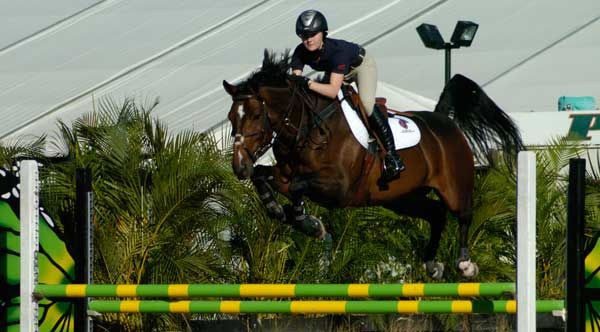
The riders came close to the tee and jumped from a take-off point close to the first pole. “Move to the base,” the coach explained.
On the last day of the master class, George set up a Chukhon and asked the riders to come in. on him in a long straight line, approach the take-off point and then soften the reins. This teaches the horse not to take off from afar, but, having formed the correct trajectory of the jump, to handle the obstacle with the right momentum.
12. Practice difficult things.
After working on the tee, George suggested that the riders work on a liverpool (a kind of obstacle) and a chink, arranged in an arc so that from the outer edge of one obstacle to the outer edge of the other there was 15,85 meters. Riders first overcame obstacles at a calm canter at 4 paces. This teaches the horse to collect. Then they rode wider, at 3 paces. After that, again at 4.
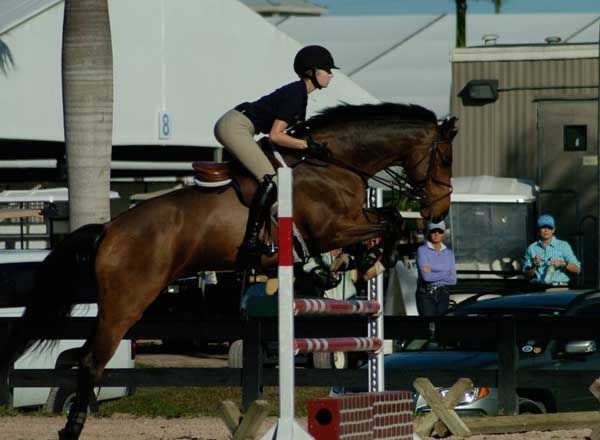
If the horse raised its head while going through the 4 strides, George asked the rider not to give up and be patient. George encouraged the students to keep trying until the exercise was done correctly.
13. Release after turning.
During the last lesson, George explained the nuances of overcoming turns. When moving from one large oxer to another, positioned in such a way that the riders had to turn, George asked them to relax their hands and let go of the horses after the turn. He required riders to focus on overcoming such a passage and think about the distance to the next oxer. “If you can do that, you will be able to count pace much better. If the horse does not obey, half halts must be used. Eliminating the turning problem is a job for home training, a rider should not be doing this in competition, ”he emphasized.
14. Difficult distances.
One day George ended up jumping on a high cross, which was nevertheless very comfortable and inviting to go straight. One of the riders made a mistake when calculating the distance. “If calculating distance is difficult for you, work on it,” George advised. He suggested that the rider hold the reins a little and use more leg. The rider does not have to be soft-handed and soft-legged if he wants to cover the distance as he sees fit.
15. Keep up the good spirits!
Even if something doesn’t work out for you, don’t despair. the horse feels that you are upset, and this affects his morale. “The relationship between horse and rider is even closer than the relationship between married people,” said George. – If you show negative emotions, your horse will be self-willed and uncooperative. Stay positive.”
Finishing the master class, DGeorge expressed the hope that his advice would help the riders become true professionals in their field. “Using this knowledge, you can develop your own training system and approach to the horse,” he said.
Sandra Oliynyk; translation by Valeria Smirnova (source)



